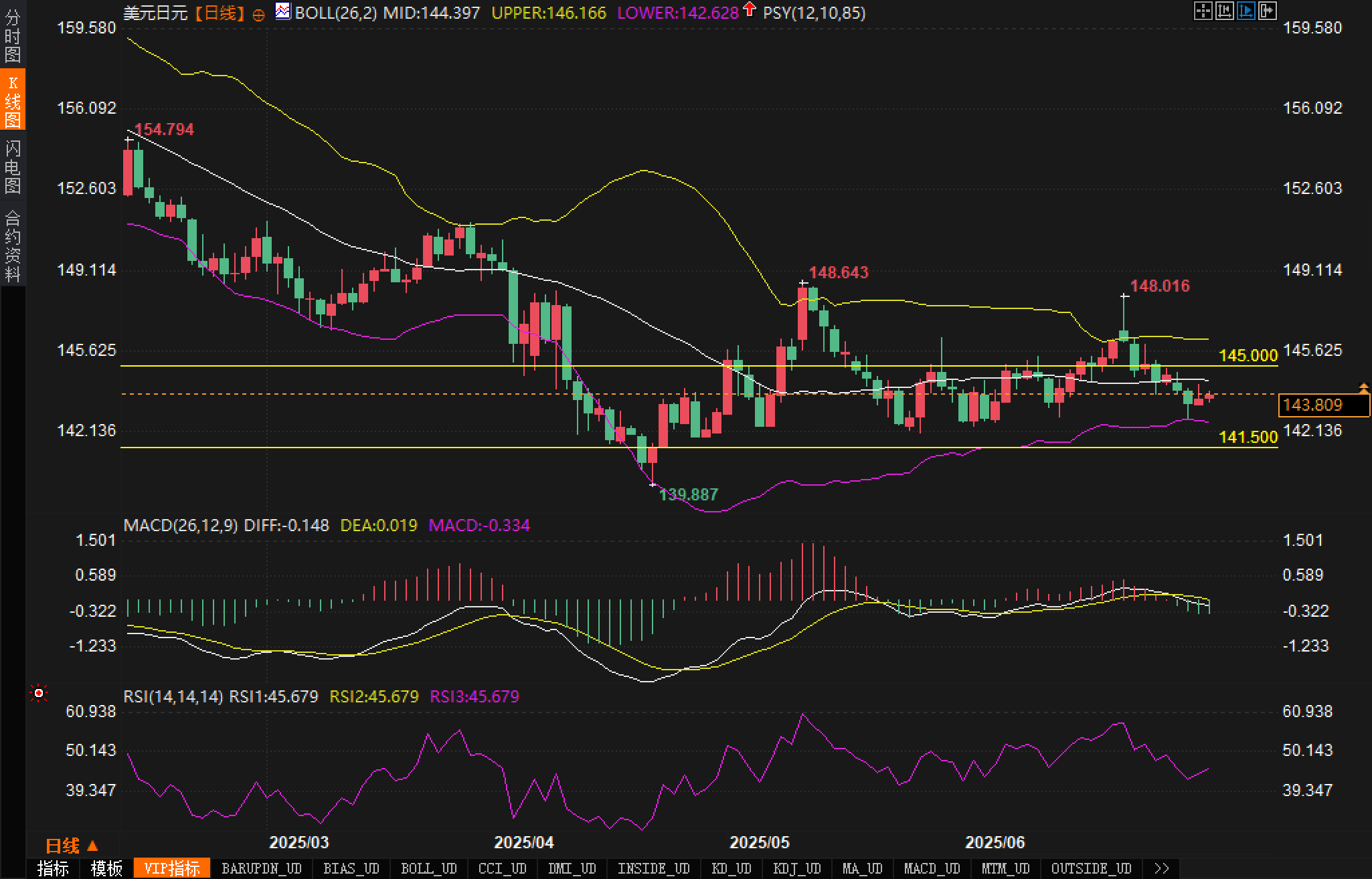Non-farm data will set the tone, USD/JPY technicals suggest important changes
2025-07-03 18:43:13

Fundamentals
The U.S. job market data will have a significant impact on the outlook for the Federal Reserve's monetary policy. Economists expect U.S. employers to add 110,000 jobs in June from 139,000 in May, and the unemployment rate is expected to rise from 4.2% to 4.3%. Federal Reserve officials have recently frequently expressed concerns about the labor market and supported lowering interest rates to address related issues. In an interview at the end of June, Federal Reserve Board member Christopher Waller made it clear that "the Fed should not wait for the job market to collapse before starting to cut interest rates."
At the international trade level, with the July 9 deadline for mutual tariffs approaching, the progress of negotiations between Washington and its trading partners has attracted much attention. According to Reuters, the United States has reached a trade agreement with Vietnam to reduce additional tariffs from the previously announced 40% to 20%. However, the US-Japan trade negotiations have reached an impasse, and Trump has expressed doubts about the prospects of the negotiations and hinted that a 30% or 35% tariff may be imposed on Japanese imports, higher than the 24% rate announced on April 2.
At the Bank of Japan, officials continue to leave the door open for further rate hikes. Bank of Japan Governor Sou Takada said the central bank could steadily resume a monetary tightening cycle after carefully studying the impact of U.S. tariffs. He noted that "the Bank of Japan currently needs to support economic activity by maintaining its current accommodative monetary policy stance, while adjusting monetary policy gradually and cautiously." Japan's inflation rate has exceeded the central bank's 2% target for three consecutive years, providing support for further tightening.
Technical aspects
USD/JPY is at a critical technical turning point. From the daily chart, after experiencing a sharp decline, the exchange rate is currently forming a rectangular consolidation pattern in the range of 142.50-145.00. The Bollinger Bands show that the exchange rate is running near the middle track, with the upper track at 146.17 and the lower track at 142.63. The narrowing of the bandwidth reflects the contraction of volatility.

In terms of MACD indicators, the fast and slow lines are running near the zero axis, the MACD line is at -0.148, the DEA line is at 0.019, and the histogram shows -0.334. The overall market is still in the bearish area.
The relative strength index (RSI) shows that the 14-day RSI is 45.679, which is in a neutral and weak area, and no overbought or oversold signals appear. The indicator fluctuates in the 40-50 range, reflecting the lack of clear directional momentum in the market.
Market sentiment observation
At present, global risk appetite has improved slightly, and the conclusion of the US-Vietnam trade agreement has eased market concerns about trade tensions to a certain extent. This improvement in risk appetite has suppressed the safe-haven asset yen. At the same time, Trump's threat to impose higher tariffs on Japan has also had an additional negative impact on the yen.
As for the US dollar, the expectation of a rate cut by the Federal Reserve has increased. The market expects a rate cut at the Federal Reserve meeting on July 29-30 to be about 25%, and a rate cut in September is almost a foregone conclusion. The US ADP employment data showed that the private sector unexpectedly lost 33,000 jobs in June, and the previous value was also lowered from 37,000 to 29,000, which has exacerbated market concerns about the weak job market.
Outlook
In the short term, the trend of USD/JPY will mainly depend on the upcoming non-farm payrolls data. From a bullish perspective, if the non-farm data is strong and the unemployment rate remains at 4.2% or lower, it may ease the market's expectations of aggressive interest rate cuts by the Federal Reserve, thereby supporting the strengthening of the US dollar. Technically, if the exchange rate can effectively break through the 145.00 resistance level, the next target will be the upper Bollinger Band of 146.17.
From the perspective of short positions, analysts believe that if the non-farm data is lower than expected and the unemployment rate rises to 4.3% or higher as expected, it will further strengthen the Fed's expectations of rate cuts and suppress the US dollar. At the same time, if the Bank of Japan continues to release interest rate hike signals, the divergence of the monetary policies of the two central banks may push the exchange rate down. Technically, if the exchange rate falls below the lower Bollinger Band of 142.63, it may start a new round of decline, with the target at 141.50 or even lower at the low of 139.89.
In the long run, analysts believe that the divergence in monetary policies between the United States and Japan may continue, which will become the core factor affecting the exchange rate trend. The Bank of Japan is more likely to further tighten its policy amid continued high inflation, while the Federal Reserve may start a rate cut cycle due to the pressure of a weak job market. This policy divergence provides structural support for the yen and may limit the upside of the USD/JPY.
- Risk Warning and Disclaimer
- The market involves risk, and trading may not be suitable for all investors. This article is for reference only and does not constitute personal investment advice, nor does it take into account certain users’ specific investment objectives, financial situation, or other needs. Any investment decisions made based on this information are at your own risk.










